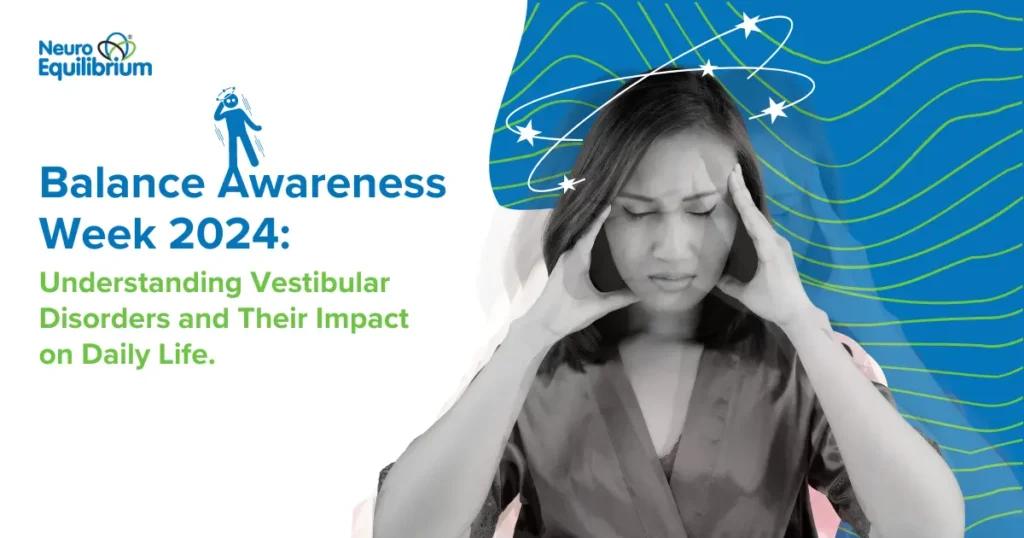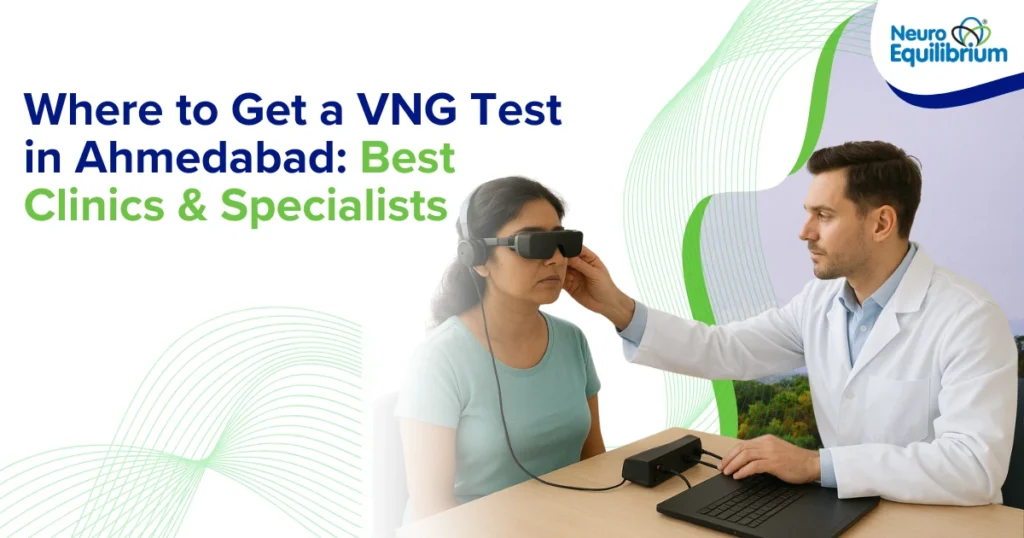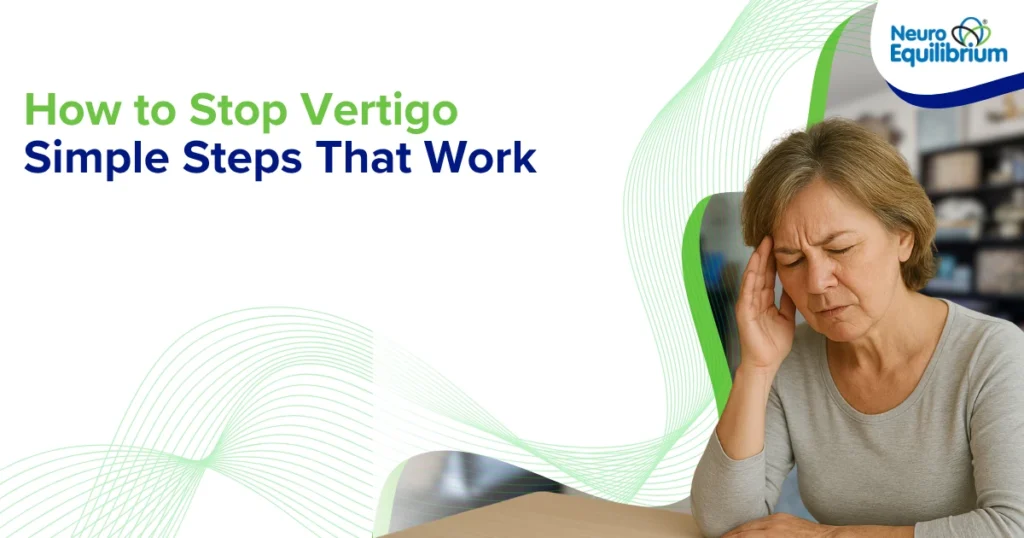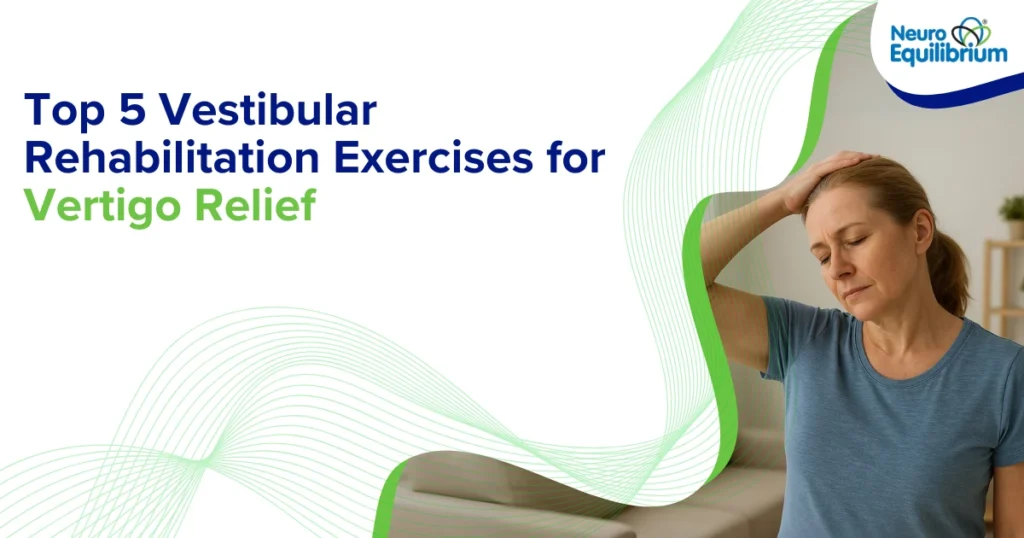Balance Awareness Week, which will be celebrated this year from September 15th to 21st 2024, serves as a crucial reminder of the importance of understanding vestibular disorders. This article aims to raise awareness about these disorders by knowing more about their symptoms, and effective treatment options, particularly focusing on vertigo management.
Know More About Vestibular Disorders:
Understanding Vestibular Disorders
The vestibular system is located in our inner ear. This vestibular labyrinth, along with its connections to the central nervous system, is responsible for controlling our balance. Various disorders can affect the vestibular system to cause vertigo and dizziness.
Types of Vestibular Disorders
- Acute Vestibular Syndrome: This is characterised by a sudden onset of acute spinning or vertigo which may last for days to weeks. It is often accompanied by nausea and vomiting. This is a medical emergency which is caused by inflammation of the vestibular nerve. It is important to differentiate this condition from a life-threatening stroke.
- Episodic Vestibular Syndrome: In this condition, the patient complains if recurrent episodes of dizziness. The most common causes include vestibular migraine (where the migraine process affects the balance system) and Meniere’s disease (caused by increased fluid pressure within the inner ear).
- Chronic Vestibular Syndrome: Some patients have complaints like a persistent unsteadiness, a fear
of falling or actual history of falls, difficulty in balance control, etc. which may last for months to years. These patients often slow down and restrict their activities. This is caused by weakening of the balance system and its nerves or degenerative disorders of the nervous system. (“Current diagnosis and treatment of vestibular neuritis: a narrative review”, 2022)
Key Symptoms of Vestibular Disorders
Dizziness and Unsteadiness:
These are fundamental symptoms of vestibular disorders and can range from mild to severe. Dizziness often manifests as a spinning sensation (vertigo) or lightheadedness, while unsteadiness may cause a feeling of imbalance. These symptoms can be triggered or worsened by movement, sudden changes in position, or even visual stimuli.
Nausea and Vomiting:
Patients with vestibular disorders, especially those recovering from traumatic brain injuries or conditions like Ménière’s disease, frequently experience nausea and vomiting. These symptoms are a direct result of the brain’s confusion between visual and vestibular signals, leading to gastrointestinal distress.
Psychological Distress:
Vestibular disorders often lead to significant psychological challenges, including anxiety and depression. The persistent and unpredictable nature of balance issues can cause or exacerbate emotional distress, impacting mental health and complicating the recovery process. This psychological burden can further diminish the overall quality of life.
These symptoms can turn simple daily tasks into significant challenges, highlighting the need for greater awareness and understanding.

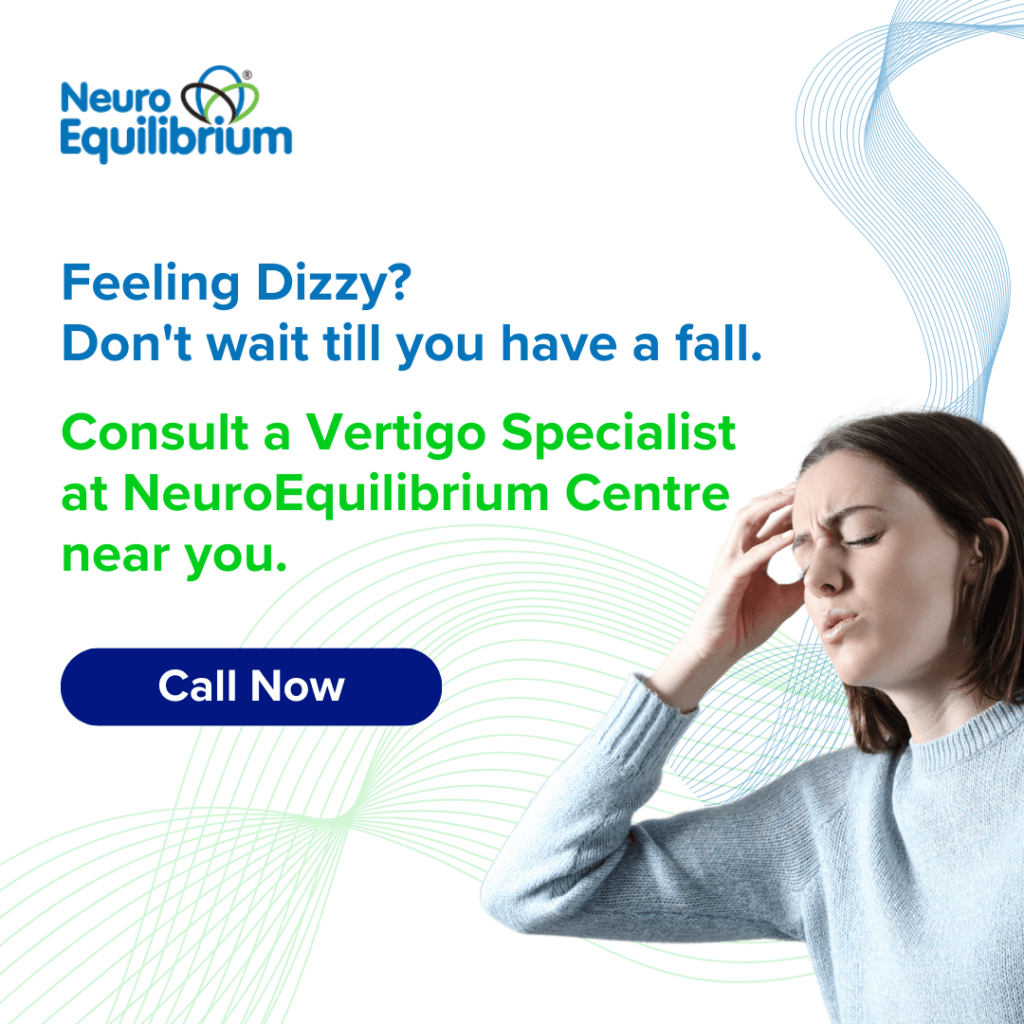
How Vestibular Disorders Affect Daily Life
One out of five falls causes a serious injury such as broken bones or a head injury.
More than 95% of hip fractures are caused by falling, usually by falling sideways.
Falls are the most common cause of traumatic brain injuries (TBI). They can cause broken bones, like wrist, arm, ankle, head injuries and hip fractures. These can be very serious, especially if the person is taking certain medicines (like blood thinners). Vestibular disorders can significantly disrupt daily life, affecting both physical and mental well-being. Here’s how:
- Balance and Mobility Issues: People with vestibular disorders often struggle with dizziness, vertigo, and unsteadiness, making simple tasks like walking, climbing stairs, or standing still difficult.
- Difficulty with Routine Activities: Everyday activities such as driving, shopping, or even moving around the house can become challenging. Symptoms like motion sensitivity can cause nausea or disorientation during these tasks.
- Fatigue and Cognitive Impairment: Constantly trying to compensate for balance issues can be exhausting. Many people struggle with “brain fog,” slow thinking, and trouble focusing, which makes tasks at work or school more challenging.
- Social Isolation: Because symptoms can be unpredictable and disabling, those with vestibular disorders may avoid social outings or group activities, leading to feelings of isolation and loneliness.
- Emotional and Mental Health: Anxiety and depression are common, as individuals cope with the uncertainty of symptoms and the impact on their independence. The constant struggle can create a sense of frustration and helplessness.
Importance of Awareness and Education
Raising awareness about vestibular disorders is crucial in promoting understanding and support for those living with these challenging conditions. During Balance Awareness Week, educational campaigns can play a significant role in informing the public about several key aspects:
- Prevalence of vestibular disorders: Many people are unaware of how common these disorders are. For instance, 30% of people over 65 experience at least one fall annually, with this figure rising to 35% for those aged 75 and older. Increasing awareness can help others recognize symptoms and the impact these disorders have on everyday life.
- Impact on mental health and daily functioning: Vestibular disorders often lead to anxiety, depression, and difficulties with routine activities such as walking or driving. With 40% of falls resulting in injuries and falls being the leading cause of injury-related death in this age group, it’s crucial to highlight the emotional and psychological toll these conditions take. This can foster empathy and encourage more robust support through counselling for those affected.
- Importance of seeking medical advice: Persistent symptoms like dizziness, vertigo, and imbalance should never be ignored. With previous fallers having a 2/3 chance of falling again in the subsequent year, educating the public about when to seek professional help such as visiting a local Vertigo, Dizziness, and Balance Disorder Clinic can lead to earlier diagnoses and more effective treatments, ultimately improving long-term outcomes for individuals with vestibular issues.
Effective Treatment Options
Treatment for vestibular disorders varies based on the underlying cause but typically includes:
- Vestibular Rehabilitation Therapy (VRT): A specialized form of physical therapy that helps patients compensate for balance issues through exercises that promote vestibular function and stability.
- Canalith Repositioning Maneuvers: Techniques like the Epley maneuver are effective for BPPV, helping to reposition displaced crystals in the inner ear.
- Medications: Some antihistamines, benzodiazepines, and antiemetics can help manage acute symptoms.
Conclusion
As Balance Awareness Week draws near, we invite everyone to actively participate in local events and initiatives aimed at increasing understanding that vestibular disorders are treatable. Share information through social media, community talks, and personal interactions to educate others about the challenges faced by those with vestibular disorders.
Increased awareness and community involvement can significantly improve the quality of life for individuals affected by vestibular disorders. Together, we can break down misconceptions, build empathy, and create a more informed and supportive environment for those living with these often misunderstood conditions.
FAQs for Balance Awareness Week 2024: Understanding Vestibular Disorders and Their Impact on Daily Life
1. What are vestibular disorders, and how do they affect balance?
Vestibular disorders refer to conditions that affect the vestibular system, a part of the inner ear and brain that helps control balance and eye movements. When this system is impaired, it can lead to dizziness, vertigo (a spinning sensation), and difficulties with spatial orientation and balance. Symptoms vary depending on the type and severity of the disorder, but they commonly include unsteadiness, lightheadedness, and coordination problems. These disorders can significantly disrupt daily activities, making simple tasks like walking or driving challenging, and often contribute to psychological distress, such as anxiety and depression.
Book a consultation at your nearest NeuroEquilibrium Clinic today.
2. What are the key symptoms of vestibular disorders?
Symptoms of vestibular disorders typically include dizziness, vertigo, and unsteadiness, often triggered by changes in head position or movement. Other symptoms include nausea, vomiting, and “brain fog,” where concentration becomes difficult. Sleep disturbances are also common, as patients struggle to find restful sleep due to ongoing discomfort. Additionally, the unpredictability of symptoms can lead to anxiety and social withdrawal, further impacting one’s quality of life. Recognizing these symptoms is crucial for timely diagnosis and management, helping individuals regain control over their daily activities and mental well-being.
Book a consultation at your nearest NeuroEquilibrium Clinic today.
3. How do vestibular disorders impact daily life and mental health?
Vestibular disorders can profoundly impact both physical and mental health. Physically, individuals often experience balance and mobility issues, making routine activities like walking, climbing stairs, or driving difficult and sometimes dangerous due to the risk of falls. Mentally, the constant dizziness and unpredictability of symptoms can lead to significant psychological stress, including anxiety, depression, and social isolation. The fear of experiencing symptoms in public can discourage social interaction, leading to a cycle of isolation and worsening mental health, making comprehensive treatment and support essential.
Book a consultation at your nearest NeuroEquilibrium Clinic today.
4. What are the most common types of vestibular disorders?
Vestibular disorders come in various forms, each with distinct symptoms and impacts. Acute Vestibular Syndrome involves sudden, severe symptoms that can last for days or weeks, requiring urgent medical care. Episodic Vestibular Syndrome, such as vestibular migraines, causes intermittent episodes of vertigo and headaches. Chronic Vestibular Syndrome presents persistent symptoms over months or years, significantly affecting daily life. Specific disorders include Benign Paroxysmal Positional Vertigo (BPPV), which causes brief, intense vertigo, and Ménière’s Disease, marked by episodes of vertigo, tinnitus, and hearing loss. Each type requires tailored treatment approaches.
Book a consultation at your nearest NeuroEquilibrium Clinic today.
5. What are the treatment options available for vestibular disorders?
The treatment for vestibular disorders depends on the root cause and specific symptoms. Vestibular Rehabilitation Therapy (VRT) is a customised physical therapy designed to improve balance and reduce dizziness through targeted exercises. For conditions like BPPV, repositioning manoeuvres, such as the Epley manoeuvre, help move displaced crystals in the inner ear to alleviate symptoms. Medications, including antihistamines and antiemetics, can provide symptom relief during acute episodes. Lifestyle modifications, such as reducing salt intake for Ménière’s Disease and staying hydrated, are also beneficial. Psychological support and mindfulness practices can further aid in managing anxiety associated with these disorders.
Book a consultation at your nearest NeuroEquilibrium Clinic today.






